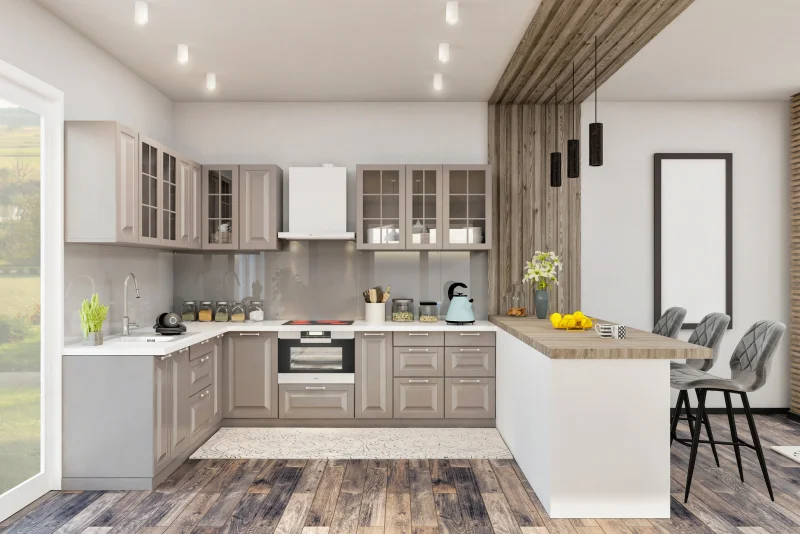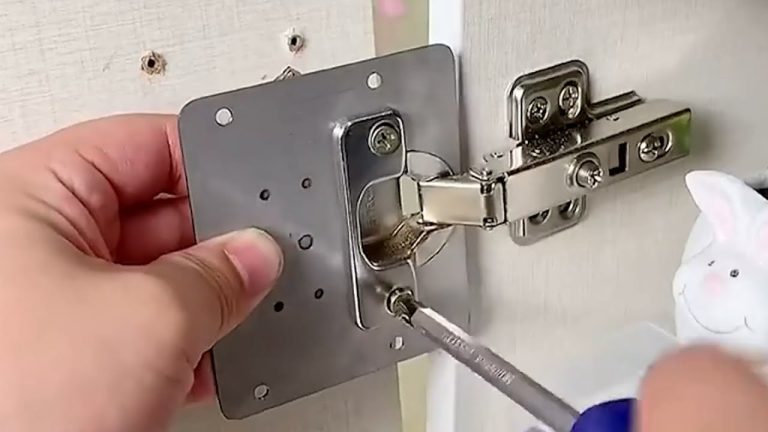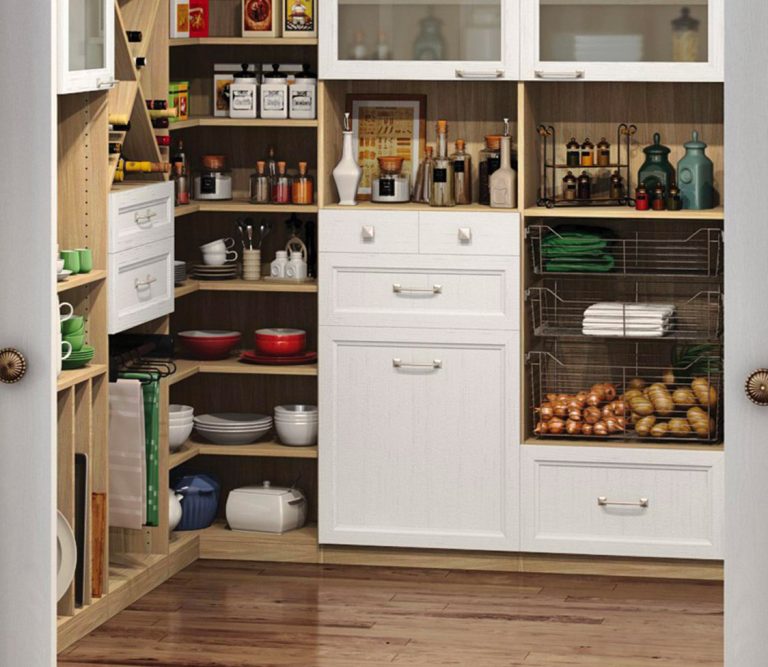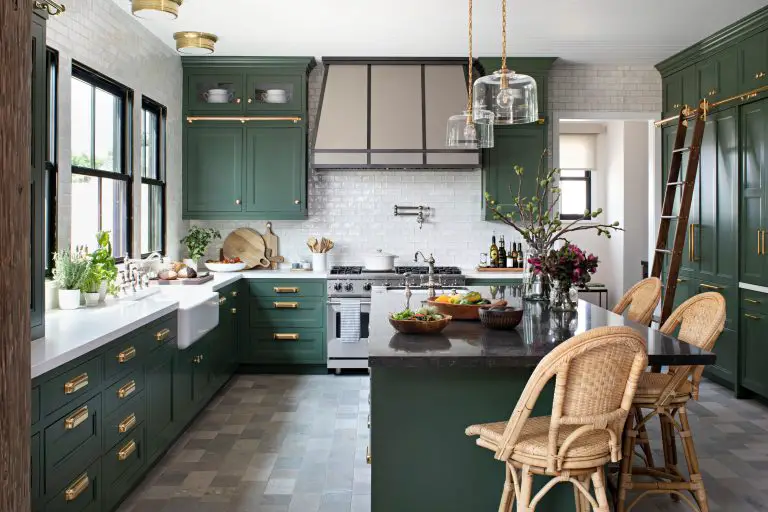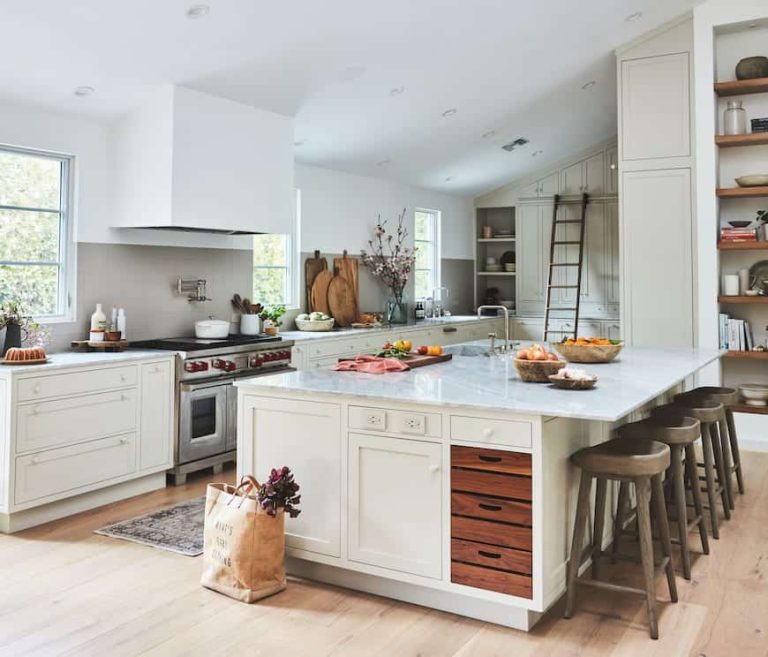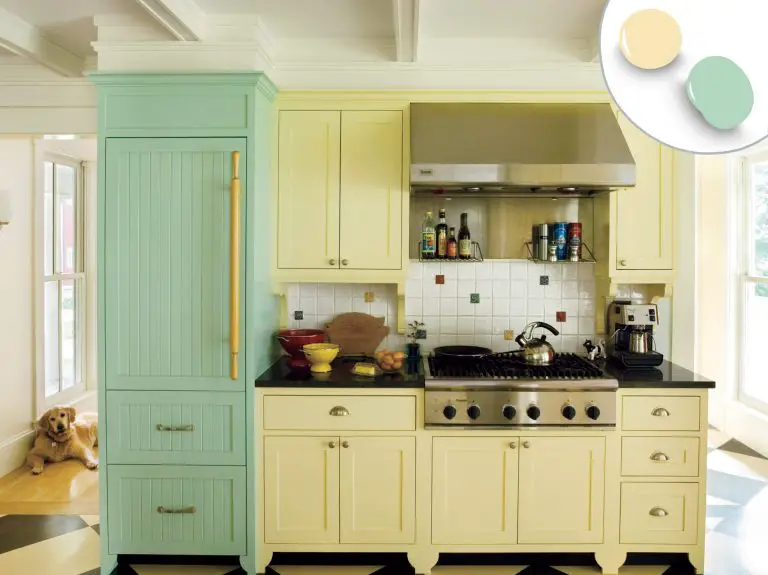Why Do Cabinets Not Go To Ceiling?
Cabinets are a common feature in a kitchen or bathroom, but have you ever noticed that they usually don’t reach the ceiling? The answer is simple: practicality. Cabinets that reach the ceiling are difficult to install and maintain, which makes them less than ideal for most homeowners. Additionally, the extra storage space these cabinets provide is usually not necessary and can cause clutter. Finally, cabinets that reach the ceiling can make a room look cramped and make it difficult to reach items stored at the top. The bottom line is that cabinets that don’t reach the ceiling are usually the better choice for most homeowners.
Types of Cabinets
Cabinets come in a variety of sizes and designs, each with its purpose and use. Wall cabinets are the most common type of cabinet, often used for storing kitchen items and other items that can be easily accessed. Tall cabinets, otherwise known as pantries, are used to store bulky items that are not used frequently. Base cabinets are placed at the bottom of the kitchen counter and are used to store pots, pans, and other cooking items. Lastly, corner cabinets are used in tight spaces to make use of otherwise unusable space.
No matter the type of cabinet, the majority of them do not go to the ceiling. This is often because of the height of the ceiling and the size of the cabinets, as well as the way the cabinets are attached to the wall. In some cases, the cabinets are too small to reach the ceiling, and in other cases, the ceiling’s height may be too low for the cabinets to reach. Additionally, some cabinets are not designed to extend up, as they may be too heavy for the wall to support. Whatever the case, cabinets are typically not installed on the ceiling.
Design Considerations
Cabinets don’t always go all the way to the ceiling for a variety of reasons. Design considerations including aesthetics, functionality, budget, and materials all come into play when deciding whether or not cabinets should be installed on the ceiling. Aesthetically, it’s important to consider the overall look of the space when deciding if cabinets should go to the ceiling. While it may look more complete and finished, it could also make the room appear too busy or cluttered. Functionality is equally important. Cabinets that go to the ceiling can be difficult to reach, making them less useful. Budget is also a factor. Extending cabinets to the ceiling can require additional materials, making it more expensive. Lastly, the material of the cabinets and ceiling should be taken into account. Generally, cabinets should not be installed on top of textured ceilings or on ceilings that are not perfectly level. Considering all of these factors can help ensure the cabinets are installed in the best possible way.
Benefits of Not Going To Ceiling
Cabinetry is a key feature of any kitchen and provides much-needed storage space for all of your cooking and dining needs. One of the biggest decisions you’ll need to make when it comes to your kitchen cabinets is whether you should go all the way to the ceiling or not. Not going to the ceiling can have several benefits, and it is important to consider these before making your final decision.
One of the most obvious benefits of not going to the ceiling is that it can create a more open and spacious feel in the kitchen. The extra height space can make the room look and feel larger and more inviting. Additionally, not going to the ceiling means that you’ll still have access to the top of your cabinets, making it easier to reach items stored in them. You’ll also be able to take advantage of the extra wall space above the cabinets to hang artwork, mirrors, or other wall accessories.
Finally, not going to the ceiling can help to draw attention to other aspects of your kitchen. A shorter cabinet will allow more of the wall to be seen, which can help make your kitchen look more finished. Additionally, the extra wall space can give you more options for making a statement with your color scheme and design choices.
Overall, there are many benefits to not going to the ceiling with your kitchen cabinets. Not only can it create a more open and spacious feel, but it can also help to draw attention to other elements of your kitchen and provide you with extra storage space.
Common Reasons for Not Going To Ceiling
Cabinets are an essential part of any kitchen or bathroom. They provide storage and are a valuable part of any home’s design. But while many people opt to go for cabinets that reach to the ceiling, some don’t. So, why don’t cabinets go to the ceiling?
There are a few common reasons why cabinets don’t go all the way up. Firstly, there may not be enough headroom to install them. The top of the cabinets needs to be at least 80cm away from the ceiling. Secondly, the ceilings may be too high for the cabinets to reach. Thirdly, the cabinetry may not be strong enough to hold heavier items at the top. Lastly, it may be too expensive to install them.
In addition, there are some other considerations when it comes to cabinets not going to the ceiling. It’s important to note that there are regulations in place that may prevent cabinets from being installed too high. Also, the shape of the ceiling may affect the installation of the cabinets. Finally, the overall design of the kitchen or bathroom may not lend itself to cabinets that reach the ceiling.
Ultimately, there are a few common reasons why cabinets don’t go to the ceiling. However, it’s important to take into account other factors such as regulations, the ceiling shape, and the design of the space before making any decisions. By considering these factors, it’s possible to determine the best option for your home.
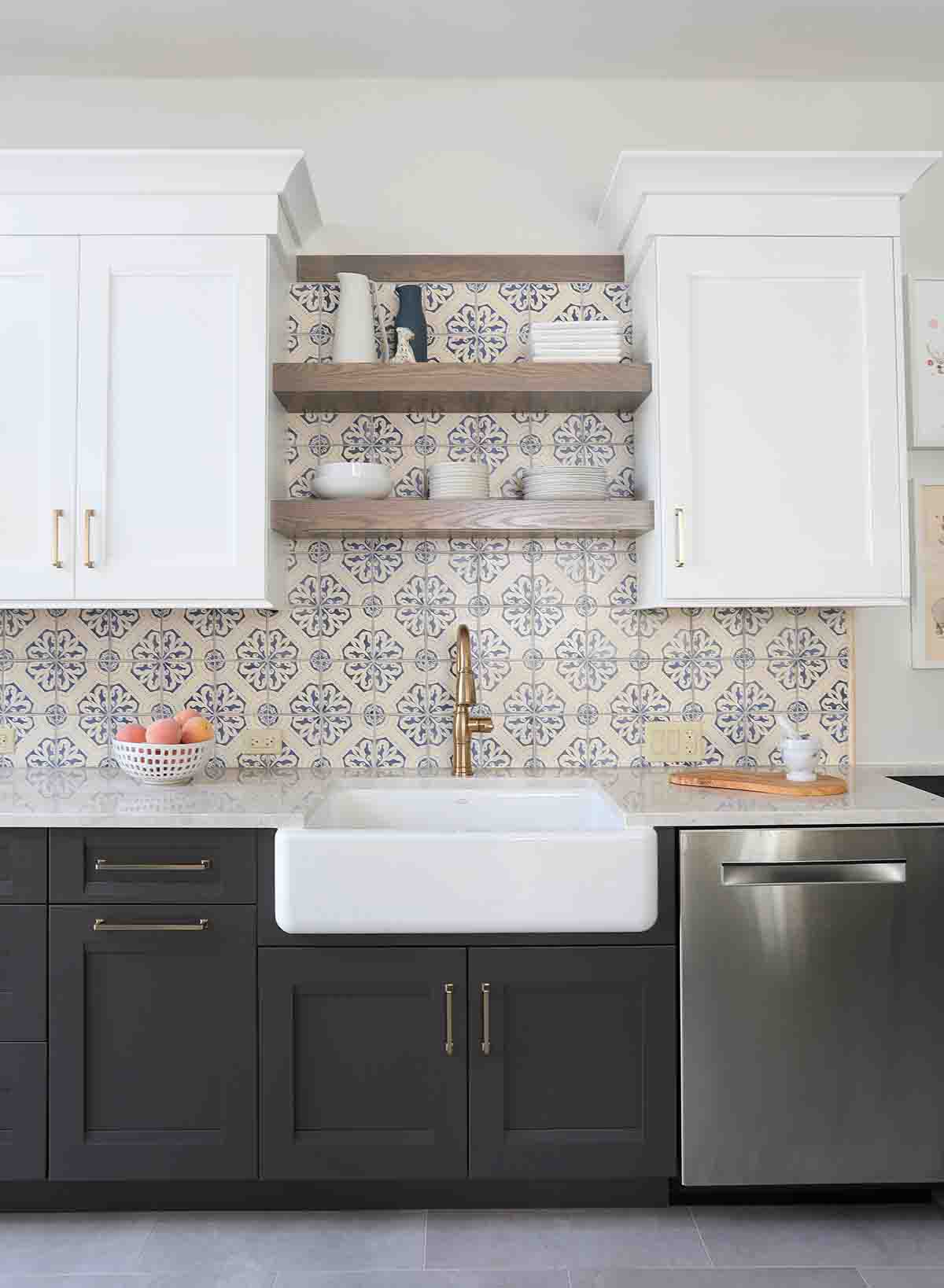
Ideas to Maximize Cabinet Space
Cabinets are a great way to maximize space and storage in the kitchen. However, many cabinets don’t reach the ceiling, leaving upper wall space unused. While this might seem like a missed opportunity, there are a few reasons why cabinets don’t always go to the ceiling.
For starters, installing cabinets that reach the ceiling can be expensive and time-consuming. This is because the walls need to be reinforced to support the added weight of the cabinets. Additionally, if the walls aren’t level, the cabinets will have an uneven appearance.
Instead of installing cabinets that go all the way to the ceiling, there are several ideas to maximize cabinet space without breaking the bank. One option is to install extra shelves on the top of the cabinets, giving you more storage space without the added cost. You can also use a pull-down shelf to store items that don’t get used often. This way, you can easily access items that would otherwise be out of reach.
Finally, you can take advantage of the space between the top of the cabinets and the ceiling by adding some decor. This could include hanging pots and pans, a row of floating shelves, or even some artwork.
These are just a few of the ideas to maximize cabinet space without having to install cabinets that reach the ceiling. By taking advantage of the wall space between the cabinets and the ceiling, you can create a more organized and efficient kitchen without spending a fortune.
Ways to Achieve a Clean Finish
When it comes to creating a living space with a polished look, the details matter. That’s why understanding why cabinets don’t go to the ceiling is important for achieving the desired effect. The primary reason why cabinets don’t go all the way to the ceiling is that it makes it more difficult to reach the top shelves. Without a step ladder or other means of accessing the upper cabinets, the storage space can quickly become unusable. But, if you have a low ceiling, you may be able to find options that go all the way up.
Fortunately, there are ways to achieve a clean finish even if your cabinets don’t go to the ceiling. One way is to install crown molding and other decorative trim on the top of the cabinets. This will give the illusion that the cabinets reach the ceiling while also providing a decorative touch to the room. Another popular option is to install a soffit—a box-like structure that is installed between the wall and the top of the cabinet. This will conceal any gaps and create a seamless look. Finally, you can also install a decorative panel on the wall above the cabinets. This will hide any exposed gaps and give the room a more finished look.
By understanding why cabinets don’t go to the ceiling and implementing the aforementioned design solutions, you can achieve a clean finish and a polished look in any space.
Considerations for Cabinet Installation
When it comes to cabinet installation, there are several considerations to take into account. One of the most important is the height of the cabinet. If you’re looking to install cabinetry that goes all the way to the ceiling, there are a few factors to consider.
First, the ceiling height of the room needs to be assessed. If the ceiling is too low, extending the cabinets could make the room feel cramped and uncomfortable. Additionally, you may need to adjust the cabinet depth to accommodate the added height.
Another consideration is the type of cabinetry you’re installing. Stock cabinets are designed to fit standard ceiling heights, meaning they may not be suitable for extending to the ceiling. Custom cabinets, on the other hand, can be built to fit any ceiling height.
Finally, the design of the room needs to be taken into account. If the cabinets are to be installed above an island, for example, the spacing between the island and the ceiling needs to be sufficient to allow for the additional height.
When it comes to installing cabinets that go all the way to the ceiling, there are several factors to consider. From assessing the ceiling height to taking into account the design of the room, it’s important to take the time to ensure your cabinetry is installed properly.
Pro Tips for Installing Topped Cabinets
There is no denying that cabinets are one of the most important elements of any kitchen. Not only do they provide you with storage space, but they also add to the overall design aesthetic of the room. But, have you ever thought about why cabinets don’t typically reach the ceiling? It’s not just a design choice but there are practical reasons for why cabinets are usually installed to only reach the countertops. There are some pro tips to consider when installing topped cabinets for a successful outcome.
First, you should make sure to consider the height of the cabinet about the ceiling. If you’re installing cabinets that are too low, it can make the room look unfinished and unappealing. On the other hand, if the cabinets are too high, they can risk blocking out natural light. It’s important to measure the space and find the right balance between the two.
Second, you should also consider the location of your outlets when installing cabinets. Cabinets that are too close to the outlets can be dangerous, as it can cause a potential risk of electric shock. Make sure that you leave enough space between the cabinet and outlet, to prevent any potential risk.
Finally, be aware of the weight of the cabinet when installing. Make sure that you’re using the right anchors and screws to ensure that the cabinet is securely attached and won’t be damaged over time. It’s also important to pay attention to the ceiling, as heavy cabinets can cause damage to the structure over time.
By taking the time to consider these pro tips when installing cabinets, you can ensure that your kitchen looks great and is safe and secure. Cabinets are an essential element of any kitchen, and it’s important to take the time to ensure that they are properly installed for a successful outcome.
FAQs About the Why Do Cabinets Not Go To Ceiling?
What are the benefits of not having cabinets go to the ceiling?
One of the main benefits of not having cabinets go to the ceiling is that it allows for easier access to the items stored in the cabinets, as well as for better air circulation and ventilation. Additionally, it can create the illusion of a larger space, as well as provide a more finished look to the room.
Are there any risks associated with not having cabinets go to the ceiling?
One of the main risks associated with not having cabinets go to the ceiling is the potential for dust and dirt buildup in the space above the cabinets. Additionally, it can be difficult to take advantage of vertical storage space if the cabinets don’t go to the ceiling.
Are there any design considerations I should take into account when deciding to not have cabinets go to the ceiling?
Yes, when deciding whether or not to have cabinets go to the ceiling, design considerations should be taken into account such as the size of the room, the height of the ceiling, and the type of items that will be stored in the cabinets. Additionally, it’s important to consider the overall aesthetic of the room and how having cabinets not go to the ceiling will affect it.
Conclusion
Overall, cabinets that do not go to the ceiling can provide a more cost-effective and space-saving option for homeowners. Additionally, it is often easier to access the contents of these cabinets and the space above them can be used for storage or decor. Ultimately, the decision as to whether or not to have cabinets go to the ceiling is a personal one that should be based on the specific needs of the homeowner.

